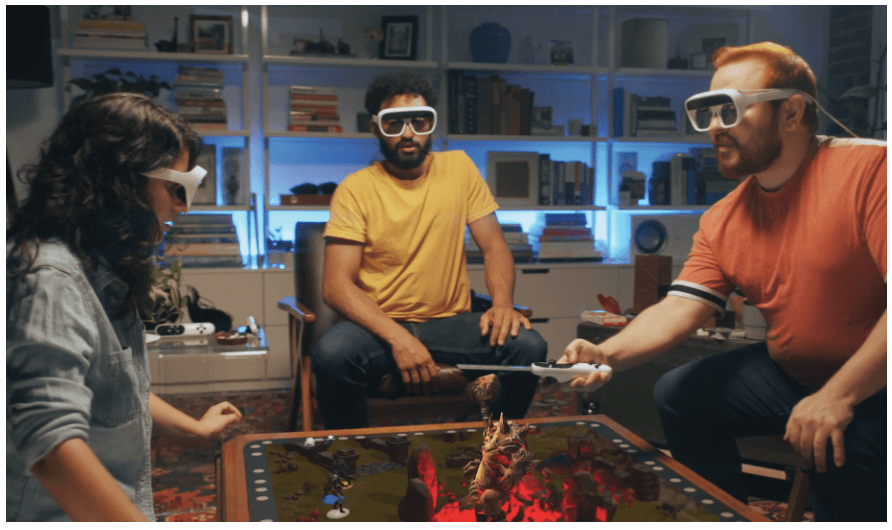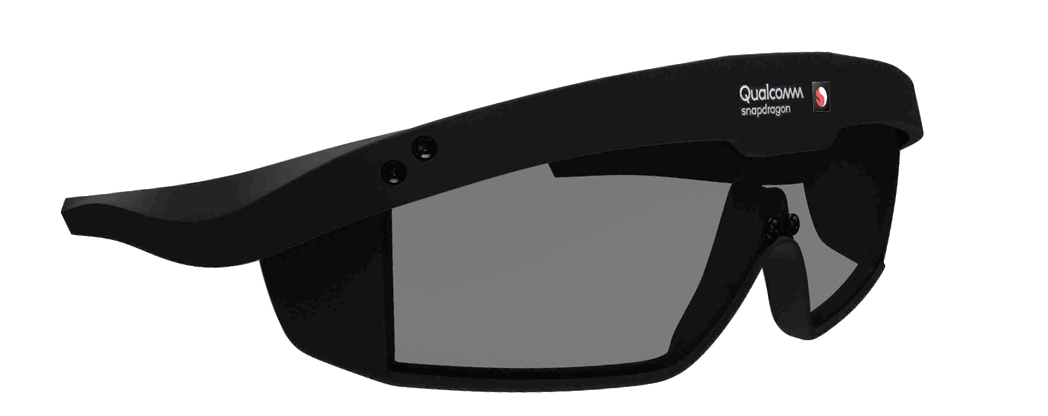Jeri Ellsworth on Augmented Reality
Tilt Five’s CEO Jeri Ellsworth discusses what consumers should expect from the future of AR.
Silicon Valley’s Jeri Ellsworth was the first team member hired into the hardware research and development department of the renowned video game company Valve, known for hit titles such as Counter-Strike, Half-Life and Team Fortress 2.
She went on in 2013 to found castAR, an AR hardware and software platform, and today serves as CEO of Tilt Five, a company whose glasses are designed to bring tabletop games to life with the power of AR. Tilt Five hit crowdfunding site Kickstarter with a modest goal of $450,000, yet raised well over $1.7 million from over 3,000 backers when the campaign ended last October.
Ellsworth sat with Luckbox to talk about Tilt Five and what consumers should expect from the future of AR.
Why should people care about augmented reality?
Well, for many years we’ve been using our 2D screens, and they’re great, but there are some limitations. It’s oftentimes very difficult to use them to collaborate because you have to group around a little tiny screen. They’re often isolating and they’re often inefficient at expressing 3D information.
We live in a 3D world, and we move about our 3D world and we pick things up and move things around, yet all of our computing is stuck on this 2D screen. The cool thing about augmented reality is it brings the user very intimately up close to the information or the game or application that they’re using. So, you interact with it in a very intuitive way.
If I want to move a game character, I can just push that game character with my finger—as if you were pushing a coffee cup across the table. If I want more information or want to look at the other angle of a particular game character, I could just stand up and walk to the other side of the table or lean in and sit a lot closer to get more detail. It’s just more of an intuitive, blended type of experience for computing.

Is the AR experience approachable because it’s so intuitive?
Absolutely. For a lot of testing that I do on our system, I actually have my father [participate]. He’s an auto mechanic, and he’s not completely tech un-savvy, but he’s definitely not a computer whiz. And so, parts of our system were designed around folks like him.
We have a wand, a magic wand—something that you can reach into this 3D space and poke things with. And our theory behind that—and it’s become true—is everyone knows how to poke things with a stick. So yes, it’ll be more intuitive for the average user because it will just be closer to what they’re doing with the rest of their life.
AR is known for gaming applications, but how will it
be integrated more broadly into daily life?
In the press, you see a lot more news articles about the gaming and entertainment spaces because they’re super relatable. I believe that’s why you see Pokemon GO. Our product resonated really well because it was entertainment-based. But there’s a lot of utility that’s emerging right now in the more professional spaces.
AR is getting a lot of traction in warehouse management, virtual assistance, working on jet engines and complex machinery. I think those are really interesting examples of using AR for more utility in less-exciting ways. It’s almost like we’re going into this phase with the smartphone, where there were a couple of killer apps—a thousand songs in your pocket, the internet in your pocket—and I think for AR, there’s going to be utilities like that that’re really going to drive home the mass market adoption.
When will we begin seeing widespread adoption of AR technology?
I think it’s going to take a good part of a decade because there are some really tough challenges. It’s kind of like the early days of home computers. Home computers were touted as likely to completely change the way you do everything, but really it broke down into a couple of applications.
Games were one of those, and super popular. Then it was the spreadsheet, and the word processor was the other really killer app. And so, I think we’re going to hear a lot of hype around “it’s going to completely change the way we do everything in our life,” but it’s really going to take a decade or more for that to happen.
Do any companies have a proprietary edge in AR that inspires you or that you particularly appreciate?
I think Microsoft has been leading the charge in this space for quite some time. Several years ago, they came out with their press releases—they were going to do the HoloLens. It was, in my opinion, very hype-y, and it was oversold, but they quickly realized the limitations of the technology they created. They focused on professional-use cases for their system, and they’re getting a lot of traction in that.
They found a place for the current state of the technology, and they’ve been keeping it very realistic up to this point about what the technology can do and just incrementally improving on it.
The Kickstarter campaign was a great success. So what’s next for Tilt Five?
We’ve been working overtime with game developers and making sure we have a content pipeline—more than just launch titles, but that we have a constant cadence after we launch. And so our objective is to start off with a pretty modest number of units, learn from that and just keep growing. We’re looking at 2021 as our year to start pushing really hard to see if we can get this mass market product.
Final thoughts?
My stance is AR is going to arrive because of companies that find a really strong niche and then incrementally improve. Companies like Magic Leap come to mind [that have] taken billions of dollars and kind of fallen flat. It’s really hard when you try to do everything at once.







